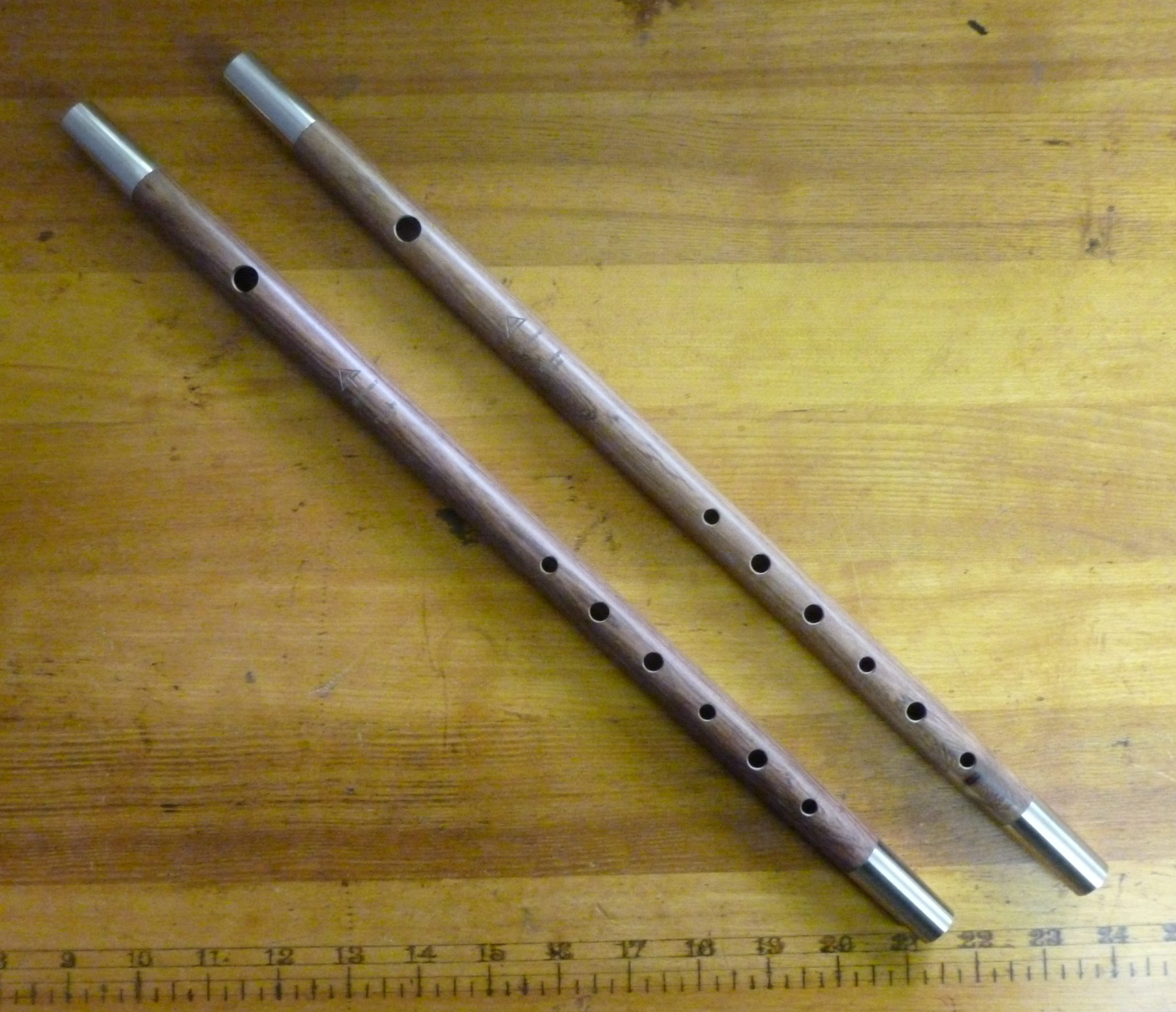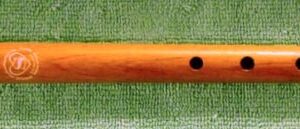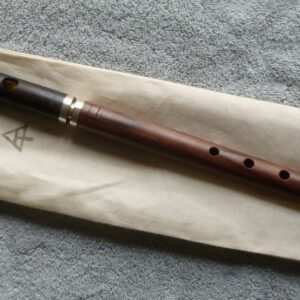Description
the Kip Sevigny Model Fife
Clifford Anthony “Kip” Sevigny lived from 1897 to 1975. Born in Tylerville, Haddam, CT, he was an Army veteran of both World Wars (served as an anti-aircraft gunner), commissioned a 2d lieutenant in the CT State Guard Reserve, a volunteer fireman in the town of Chester, Connecticut, had worked as a tile cutter, a carpenter with his father by civilian trade, and a fife maker. Aside from a stint during the Great Depression when he went south to work for Sunoco and managed a few gas stations for a cousin, Kip lived his life in Chester. His house still stands which overlooks the north side of St-Joseph’s Catholic Cemetery where he is buried with his parents and sister; he never married.
Kip’s fifes were well known in his day, but he made them in small numbers, unable to compete with the more generally known makers such as Cloos and Penzel-Muller. He had his standard design which he complained bitterly that the Cloos Company had “stolen” from him… The Cloos “Improved Model” does indeed share the profile and bore diameter. Years later, Ed Olsen told me that Henry “Ed” Ferrary had, in fact, stolen Kip’s design – the tone hole layout and bore diameter but used his own boring method (see the Nach-Ferrary). When I compare the several standard design Kip fifes I’ve handled to Ferrary’s standard Bb layout, I can see Ed’s point. Ralph Sweet had paid Kip a visit in around 1957 to watch him make fifes and related to me what he had witnessed of the process. Kip supplied, during his lifetime, all the fifes utilized by the Chester Fife & Drum Corps and some of his fifes are on display at the Sousa Band Archives at the Center for American Music in Illinois; the post-1892 Sousa Band had apparently purchased a set of Kip’s fifes very early in the 20th century and utilized them until about 1930 when the band shut down. Or so the story goes.
Kip died in Chester in 1975; his fifes had already been eclipsed by those made by Henry “Ed” Ferrary in nearby Essex. While Kip had been making his bores with twist drills and reamers, Ferrary utilized a “gun drill” which made a smooth, burnished bore. Thus, Ferrary fifes were easier to play particularly in the highest register. My replica of Kip’s “standard design” features the short, tapered ferrules he liked to use and the bore is made as I make all my bores; it plays actually a bit better than Kip’s fifes for mine has the smoother bore with no hitches, perturbations, or interruptions left behind by the old “twist drill method”. I offer this excellent model to keep the memory of Kip alive and to offer another locally impactful fife to the collection.





